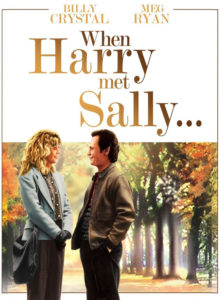If there was ever a tumultuous craze among teen-agers in the 1950s it certainly was the advent of the rock ‘n’ roll era. America was transitioning back to a state of normalcy after the conclusion of World War II. Rationing of food, gasoline, rubber and many other commodities was finally put to rest. A new style of music was bursting on the scene and teen-agers were absolutely going crazy for it; not only for the music itself, but for the individuals and groups playing and singing this new and mesmerizing sound.
Origins
A precursor to rock was in 1939 when “Big” Joe Turner and pianist Pete Johnson corroborated on a recording of Roll’em Pete, a jazz song with rock characteristics. The antecedents of rock ‘n’ roll’ in the late 1940s into the 1950s were from a number of styles of music including; gospel, jazz, some African styles, rhythm and blues and country music. This music was sometimes described as a white rendition of the black musical mode called rhythm and blues or R & B. This was a blues style that used amplified instruments that produced a heavy, strong beat.
In the early days of rock ‘n’ roll, the piano or saxophone was quite often the lead instrument. By the mid-1950s the sax and piano were replaced by the guitar. The snare drum laid down a blues rhythm with an accented back beat. The classic rock band uses two electric guitars; one lead and one rhythm. In early bands a string bass was present but later it was replaced by an electric bass. A drum set completed the basic instrumentation of the band. The vocal was often loud. The electric guitar, that Chuck Berry and many others used, became
the main instrument of the rock era.
Most people remember “The King of Rock ‘n’ Roll,” Elvis Presley. He used a riveting combination of hard-driving R & B with country western and rock elements. The lyrics were fairly simple and earthy and addressed the emotional and social concerns of the nations’ youth. Presley was also known for his suggestive bodily gyrations. He appeared on the Ed Sullivan television show and Sullivan, unaware of the physical part of his act, let it be known that he was not happy and was embarrassed by Presley’s act. The rest is history.
Musician, songwriter, Buddy Holly, was a central figure of the mid-1950s rock ‘n’ roll scene. His style was a blend of country, rhythm and blues. and gospel music, but later it evolved into pure rock. “Fats” Domino, American pianist, singer and songwriter, was well-known for his New Orleans sound. It is said he laid the foundation for rock ‘n’ roll. Elvis called him the “Real King” of rhythm and blues.
The first nation-wide rock hit, the one that gave the genre its name, was Rock Around The Clock, by Bill Haley and his Comets, in 1955. No single song or record can be called the first rock record but this song is in the running for that honor. It was considered to be the song that brought rock ‘n’ roll into the mainstream culture, worldwide. It had a tremendous international impact and was, without a doubt, one of the biggest hits of the era. It was featured in the popular film, Blackboard Jungle with Glenn Ford.
Rock ‘n’ Roll influences were present in American society in non-musical areas, including non-conforming lifestyles, politics, language and dress and the civil rights movement. Radio, television and movies all contributed to the rise of rock.
Cleveland, Ohio is often described as the birthplace of rock. This is disputed by some historians as they claim it started in the southern United States. As more blacks moved north, there was a merging of black and white musical styles, on radio and records. African-American styles of jazz and swing were adopted by white musicians – this all contributed to the origins of rock.
Rock artists from the early decades include: Chuck Berry, Bo Diddley, Little Richard, Jerry Lee Lewis and Gene Vincent. By the mid 1950s another group of musicians were playing rockabilly. These included Elvis Presley, Carl Perkins and Johnny Cash.
Rockabilly inspired songs were Johnny Cash’s Folsom Prison Blues, Carl Perkins’ Blue Suede Shoes and Elvis Presley’s Heartbreak Hotel. This form of rock music would later influence the “British Invasion” phenomenon of the Beatles music. The impetus for the transformation of rock ‘n’ roll musical styles came from England. Both the Beatles in 1960 and the Rolling Stones in 1964, altered the original elements adding wit, sensuality and new textures, forms and rhythmic elements in their music.
When I was a young teenager in the mid-50s a style of rock ‘n’roll was making waves with the nation’s youth. It was called Do Whop or Doo Wop. Its origins were black vocal groups: The Mills Brothers, The Ink Spots and The Platters, who had an enormous hit with The Great Pretender. Do Whop would have an impact on surf music and the Beatles. Many American musicians popular in the U.S. were also well-known in England.
Themes and texts of rock songs began to reveal topics and subjects that were previously considered inappropriate. These subjects include, sex, drugs, certain conflicts, and other taboo areas. The cross-cultural mix of black and white based music was prevalent in the coming of the civil rights movement and sparked protests in American society. This new form of music encouraged a new understanding of racial equality and acceptance.
Rock music initiated new dance styles, especially among teenagers. Teens were watching American Bandstand for the latest in both dance and popular clothing. New dances were the Twist, Hip-hop and many others.
The 1960s saw the emergence of soul music. It was a merging of rhythm and blues and gospel styles. Folk rock was the product of Bob Dylan in his later work. Acid rock was an attempt to reproduce the hallucinogenic drug experience. This style used advanced electronic sound to produce its effects. Glitter rock featured outrageous costuming and make-up. The group “Kiss” is a later example.
Hard rock and heavy metal was louder and more repetitive. It was highly amplified and popular from the 1960s through the 1980s. Another 1970 innovation was punk rock. It features simple melodies and harmonies with political lyrics. Salsa, a Latin America style of pop music, combines Latin and rock music. Fusion combines the style of jazz and rock. Grunge is similar to heavy metal and was popular in the 1990s. Jazz rock is similar to Fusion.
The Rock and Roll evolution has also given birth to Rap, Hip-Hop and many others. Obviously, rock music has gone through many permutations in the decades since the 1950s. It is still evolving as time goes on. Although the changes may be slight and subtle, rock music will probably be with us, well into the future.








